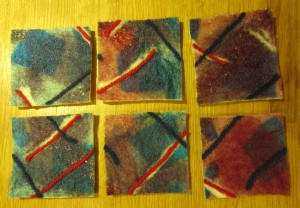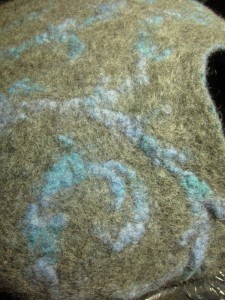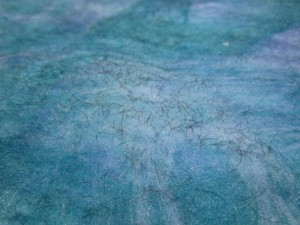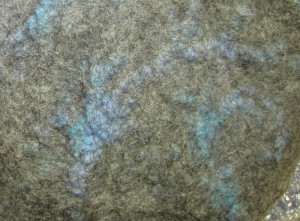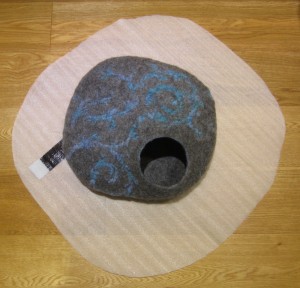Does anyone else take the approach of thinking of how much you are saving rather than how much you are spending when you see a sale?
Last week I was a little bit naughty, I found a Simplicity embellisher on Amazon, reduced from £300 to £100, normally I am a bit sceptical when I see such discounts and think they have previously hyper-inflated the price just so they can offer incredible “discounts” but a quick look around the internet revealed £300 is the standard price for an embellisher and it appears this particular model is about to be superseded, hence the reduced price.
Acknowledging that I know almost nothing about using these machines I bought a book at the same time, Sheila Smith’s Embellish, Stitch, Felt, Using the embellisher machine and needle punch techniques.
These are my thoughts on the book….
First of all the likes:
- She presents a couple of unusual ideas for “materials” to use, although the majority are rather predictable.
- The initial “getting used to your machine” projects are well explained
- There are some beautiful and inspiring photos.
- She offers some useful tips on how to avoid breaking the needles.
- The section on creating tucks and folds is interesting and has me reaching for my fabric manipulation manual.
- There are some basic wet felting instructions, I think it is useful to create your own prefelts as backing fabric / embellishments.
The disappointments:
- She says you cannot turn the fabric while embellishing, this isn’t true, so long as the needles are moving at a reasonable speed you can move the fabric in any direction, including turning it.
- I was left with the impression that Sheila had only been using her machine for a couple of weeks when she wrote this book.
- Although she talks about shading by needling from the reverse side, there was no mention of adding a different colour to the back and needling through to produce colour mixing on the front. I consider myself to be a complete novice so thought this was a very obvious omission.
- I would have liked to see more samples showing the effect of the embellisher on different fabrics and materials.
- For those expecting an element of “stitch” as the title suggests, I think you will be disappointed, there are only a handful of photos showing pieces that have been stitched and there are no explanations accompanying the few examples there are.
- There is a brief section about fibre reactive dyeing but no mention of acid dyeing, given that most of the projects recommend prefelt as the base and yarns for decoration I find this a bit odd.
- The 3 projects in the back of the book, a bowl, a lattice scarf and a bag recycled from a jumper did not inspire me at all, only the scarf looked like it had been made by an adult.
Overall a good starter book for a complete novice but anyone who has used an embellisher before will probably be disappointed.
My intial thoughts on on the Simplicity 12-needle embellisher:
- The throat plate has an individual hole for each needle – this is good because it means the fabric / wool does not get pushed through the plate.
- It doesn’t have a finish with the needles up facility – this is a bit of a pain because you have to turn the hand wheel to bring them up before you can move the fabric.
- The presser foot will not raise more than 5 mm making it really difficult to feed 2 layers of medium weight prefelt under the needles. While I appreciate it’s not wise to feed multiple layers through at once, you really should be able to feed 2 layers of felt at once.
- You can use anywhere between 1 and 12 needles, the latter allows really quick coverage of large projects.
- Each needle can be replaced individually, I understand there are some machines that expect you to replace the entire head when you break the needles.
- The replacement needles are quite expensive (about £2 each).
- The machine is small and light-weight, the carry handle on the top makes it very transportable.
These are the results of my first experiments with the embellisher, I can see it being most helpful using up my thicker fabric remnants and the synthetic organzas that don’t nuno felt that well. Some of the fabrics in these pieces have metallic qualities that catch the light very nicely.
